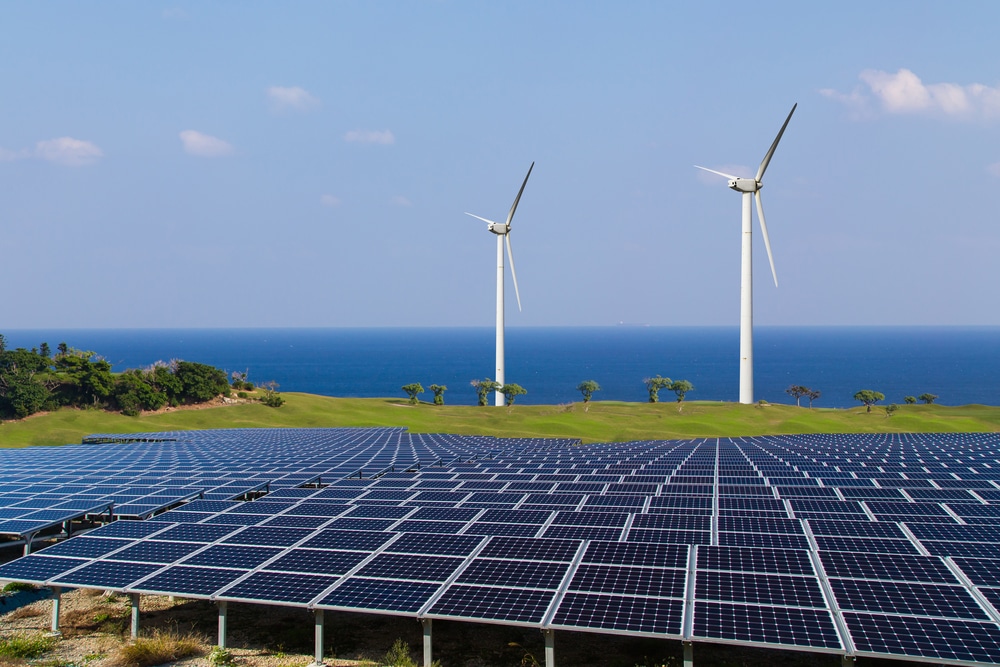You’ve probably heard that you can save hundreds of dollars on your electricity plan by comparing deals; but if you haven’t, we’ve got good news for you. So, maybe you’re one of the many Aussies who just take an electricity plan out with a provider and stay on that plan for years? If not decades? Well, you’re not benefiting from the generous discounts available on electricity plans nowadays.
Just over a decade ago, the electricity market in Australia started deregulating, with the goal of more affordable electricity. It didn’t quite work that way in practice, though; a few major players entered the market, but there wasn’t much competition. So the price Aussie bill payers paid for electricity went steadily up for about a decade. There was a big kerfuffle about this back in 2018, though; so government policy has been steadily working to drive prices down since. In the meanwhile, a ton of new providers came into the market, making it more and more competitive.
But what about those of us who’ve been plodding along on the same plan for years? Those who haven’t really given power much thought? Electricity plans aren’t something we really think about much, after all; electricity is an absolute necessity, but comparing plans just ain’t fun. Some of us regularly hunt for the best plans on the market, with competitive discounts and cheaper usage rates; but that sounds like a lot of effort, right? (Good news; it doesn’t have to be. More on that later.)
So, let’s say you signed up for your plan awhile ago; maybe with a 24-month introductory discount. Now that the discount has expired, you’re likely on either a standing offer or a Default Market Offer; that means you’re getting stung with a monthly bill that’s way more than it needs to be. You see, those plans with competitive discounts and so on are market offers; when they expire, you’ll roll over either to a Default Market Offer or a standing offer. The standing offer is basically the maximum that an electricity provider can legally charge; it provides no savings to cushion otherwise-expensive usage charges.

How do Default Market Offers work?
Well, government policy has come in and improved things a bit, helping good ol’ Aussie battlers keep bills down. In mid-2019, the Australian Energy Regultor introduced a price ceiling on those standing offers; that ceiling is known as the Default Market Offer (DMO). It’s been introduced in NSW, QLD (SEQ only), and SA, with a similar system in VIC (Victorian Default Offer). However, you’ll only be moved to a DMO if you’re on a standing offer with a flat-rate tariff; that means that you’re on a plan charging the same rate for electricity 24-7, rather than an on-peak/off-peak plan.
Generally speaking, the DMO won’t be the best deal on the market; for that, you’ll want to explore market offers. However, it does result in somewhat more affordable power bills. The DMO acts as a reference price for electricity providers, and varies between areas; electricity providers aren’t allowed to charge more than the reference price for typical usage and supply charges in your area. (But, what if you’re using more electricity than people in your area typically do? Well, you could still end up with a higher bill than the DMO. As a reference price, you can think of it as a benchmark; it’s not set in stone, so if you blast AC 24-7 during summer, you can still get bill shock!)
If you live in an area with a DMO, your electricity provider’s also obligated to show you how much cheaper their flat-rate market offers are; that is, in comparison to the reference price, as a percentage. The more you know, the better; and this certainly makes it easier to compare plans and see how much you could save!
Energy Plans, Explained
If you live in a state/region with DMOs, there’s two different types of electricity plans available for flat-rate customers; you’ll either be on a DMO or a market offer. Standing offers have been defunct since July 2019; they offered no discounts and had high usage rates. Since July 2019, they’ve been replaced with DMOs (Default Market Offer); these have no discounts, and are very rarely cheaper than market offers, but they’re still fairer than standing offers. They serve as a reference price, a price ceiling above which electricity providers cannot charge; although that doesn’t mean you won’t get a higher bill if you use more than the benchmarked amounts. However, these reference prices are based on typical electricity usage and supply charges for your area.
Next up, there’s a market offer; this is essentially a special deal you’ll receive when signing up to an electricity provider. Typically, it’ll be cheaper than the DMO. You can also sign onto a market offer by renewing your contract. Furthermore, you can sign up for a new plan with your current provider. After all, as a business they’d likely rather be able to charge you more within reason; but they still don’t want to lose you as a customer. It’s rather like when your phone contract expires and you get offered a new phone or a discount; market offers sweeten the pot. However, it’s important to note that market offers are often time-sensitive; after a certain amount of time, you’ll generally revert to the default market offer.
Market offers are characterised by being a special deal, so they may have unconditional and/or conditional discounts; for example, a conditional discount could include a direct debit discount, an on-time payment discount, etc. On the other hand, an unconditional discount could be a discount on your per-kW usage charge. Although usage charge discounts can be conditional too; it pays to read the fine print!

Are Default Market Offers the cheapest?
DMOs do help to make prices fairer, but you can often still get a better deal. Many market offers will provide cheaper usage rates and supply charges. And that’s even before conditional discounts come into play! According to the ACCC, there’s a whopping $900 million in electricity bill savings available to households by switching from the most expensive plan on offer to the cheapest. They’ve also found that compared to it pays to shop around; the annual price savings between the DMO and the cheapest market offer for average households are:
- $290-380 in NSW
- $300 in SA
- $260 in SEQ
- $250-300 in VIC (where the system works a bit differently; read about the Victorian Default Offer)
According to ACCC Chairperson Rod Sims:
“Households can find an even better deal, potentially saving hundreds of dollars a year, by shopping around and looking at the offers of some of the smaller retailers in the market.”
Where does solar power fit in?
If you’re looking to maximise your savings on your electricity bill, plan comparison is a great place to start; but it’s still leaving money on the table. That’s because comparing grid electricity and solar can work hand-in-hand to save you money. Solar power is an investment both financially and in Australia’s energy future; and according to Choice Magazine, a 5kW system can pay for itself in as little as 2 years. Of course, payback periods depend on a few things! For example, the amount of sun you receive; how expensive electricity is where you live; and how much you export back to the grid. Check out their handy solar payback period calculator for info for your nearest capital city. However, it’s safe to say that this a sound financial choice; research shows that almost 95% of Aussies who’ve installed solar believe it was a good financial decision!
For homes with solar, an important part of electricity comparison will be solar feed-in tariffs (FiTs). These vary quite a bit from plan to plan; and because you may be trading off other discounts, a cheaper FiT doesn’t necessarily mean the cheapest monthly bill. So you’ll want to aim for that sweet spot; an affordable plan, with a generous solar FiT. That’s why it pays to shop around!
So, how do I compare electricity?
Comparing electricity plans sounds like it’s going to be a schlep; but actually, it’s become a lot easier than you might imagine. Five or ten years ago you might’ve been trawling through countless websites, with complicated jargon; after all, research shows that about 3 in 10 Aussies have little to no understanding of their electricity bill! You might’ve had to call up salespeople; and they might not be 100% honest, since they get commission to sign you up for a more expensive plan. Fortunately, things have changed, thanks to free comparison websites like Energy Matters, powered by CIMET’s comparison platform technology. Energy Matters delivers competitive quotes for solar power systems, panels and batteries, and lets you compare electricity & gas deals; Energy Matters compares electricity, gas, Internet and phone plans. You just fill in a few simple questions and receive quotes from a panel of approved providers in moments; it couldn’t be simpler!
What should I be looking for when I choose an electricity plan?
There’s a lot of jargon involved, but it’s easier to understand than you might think! First of all, let’s look at the supply charge and usage charge on the plan. Supply charge is a daily fee which you’ll be charged regardless of whether you use power that day or not; it’s the cost of having power supplied to your home. Next up, usage charge; the per-unit fee for every kW of power you use. You’ll ideally want to find a plan with affordable usage and supply charges; some plans will hike up the supply charge to compensate for a cheaper usage charge, so keep an eye out! For many homes, a lower usage charge will be appealing; but what if you’re not home much and don’t use much electricity? You may find that you’re better off with a higher usage charge and a lower supply charge.
Next up, think about what times you use power. Are you out of the house during “peak hours”, or perhaps you’re a night owl? You might find it significantly cheaper to be on a time-of-use plan. These plans reward you for using off-peak power; but if you’re working from home during summer with AC on full-blast, time-of-use plans can seriously backfire; think bill shock! As we’ve discussed, there’s also various discounts and perks that can sweeten a deal; for example, direct debit discounts, on-time payments, and even free movie tickets!
It’s important to consider how and when you use power, comparing plans to make sure you’re getting YOUR best deal. Not someone else’s. Word-of-mouth is important, but it’s not the only factor; what works for your shift-worker neighbour might not work for your home; for example, if you work from home, or the kids are playing with the power-hungry Xbox after school.
Now you understand a bit more about what to look out for! So, are you ready to compare electricity prices and plans? How about getting a great deal on your solar panel & battery installation? Just head over to Energy Matters for an easier way to land a bargain!













































